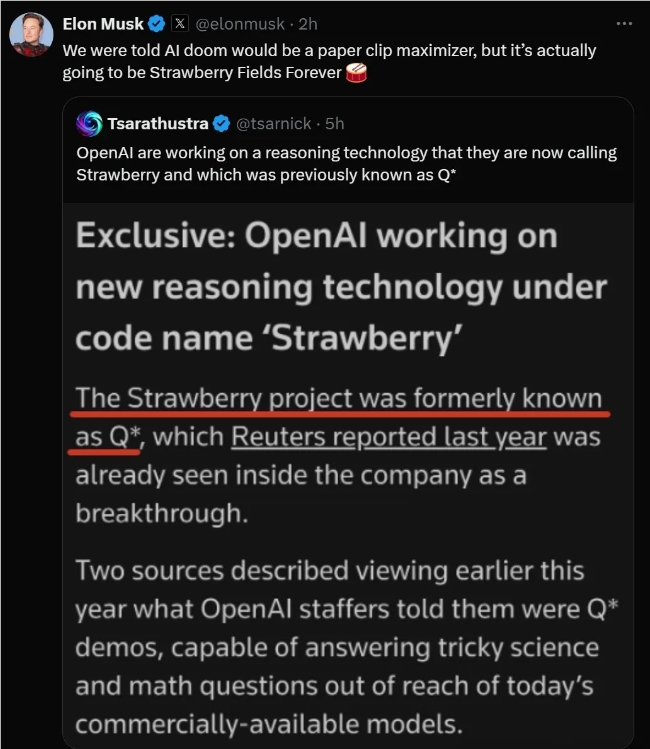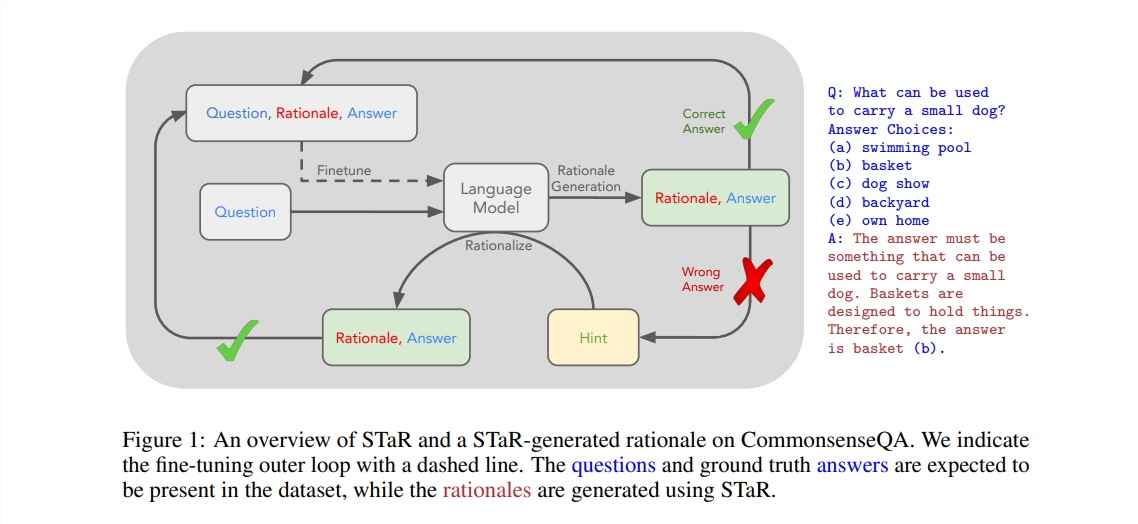OpenAI’s mysterious “Strawberry” project has finally been unveiled! The project previously codenamed Q* has now reappeared under the name "Strawberry". Its powerful functions are amazing: AI can independently plan tasks, search for information online, and even conduct in-depth research! Even Musk made fun of it, which shows its great influence. The editor of Downcodes will take you to learn more about this impressive project and see what magic it has.
Recently, OpenAI quietly unveiled the mystery of the “Strawberry” project. This project, formerly known as Q* and now re-launched as Strawberry, is said to allow AI to plan tasks in advance, collect information online autonomously, and even conduct in-depth research.
Even Musk, a big figure in the technology world, couldn't help but get involved. He joked in the comments: "I originally thought that the end of AI would be the paperclip disaster, but now it seems that it may be endless strawberry fields."

Despite the outside world's curiosity about Project Strawberry, OpenAI has been tight-lipped about the details of its operations. The development process of this project is highly confidential within the company, so much so that even the release time has become a mystery.
At a recent internal meeting, OpenAI showed off a demo version of Project Strawberry, with reasoning capabilities that are almost as strong as humans. This coincides with their recently announced AGI roadmap, which makes people wonder whether OpenAI is brewing bigger moves.
The design concept of the strawberry model is to enable AI to not only generate query answers, but also to plan ahead, browse the Internet autonomously and reliably, and conduct so-called "in-depth research." Currently, this capability is the first of its kind in the AI field.
People familiar with the matter said that OpenAI's Strawberry Project is somewhat similar to a method developed by Stanford University - "Self-Teaching Reasoner" (STaR for short). STaR achieves self-improvement by iteratively creating training data.

Paper address: https://arxiv.org/pdf/2203.14465
Currently, methods for letting AI generate inference processes are either costly or sacrifice accuracy. But STaR technology allows AI to improve itself by iteratively using a small number of inference examples and a large amount of non-inference data.
The workflow of STaR technology is as follows: First, AI tries to answer many questions and generates a reasoning process. If the answer is wrong, regenerate the reasoning knowing the correct answer. Then, fine-tune all the reasoning that ultimately led to the correct answer, and repeat the process.
OpenAI hopes that Strawberry’s innovation can significantly improve the reasoning capabilities of AI models. This involves a special processing method - after the AI model is pre-trained with a large amount of data, it is adjusted to optimize performance.
OpenAI also wants Strawberry to be able to perform long-term tasks (LHT), which require the model to plan and execute a sequence of actions in advance. To achieve this goal, they are creating and evaluating "deep research" datasets.
With the gradual advancement of the Strawberry Project, OpenAI is getting closer and closer to achieving the goal of AGI. If Strawberry’s reasoning ability is truly comparable to humans, then the future of AI will be limitless.
OpenAI’s “Strawberry” project is undoubtedly a major breakthrough in the field of artificial intelligence, and its future development deserves our continued attention. The editor of Downcodes will continue to bring you more technology information, so stay tuned!